Semantic seo is modern seo that today, all search engines have adopted, but unfortunately, our search engine optimization specialists have not. semantic seo is the type of search engine yes, but without semantic seo, is seo is isn’t complete. How? I discuss in detail from definition, importance, history, difference, how it works, and yes, uplead seo is the best knowledge base for learning semantic seo.
I’m clear on 1 thing that semantic seo is not really meant to be semantic seo, which most of the people or so-called mentors tell you, it’s very complex and totally based on the NLP, NLU, AI, ML, and these types of things.
What is Semantic SEO?
Semantic seo is the optimization of semantically rather than by words; it’s a deep understanding of perspectives, patterns, and possible intents behind the query that enables it to answer holistically. semantic seo is creating content to connect entities with a clear relationship to the subject and the overall document.
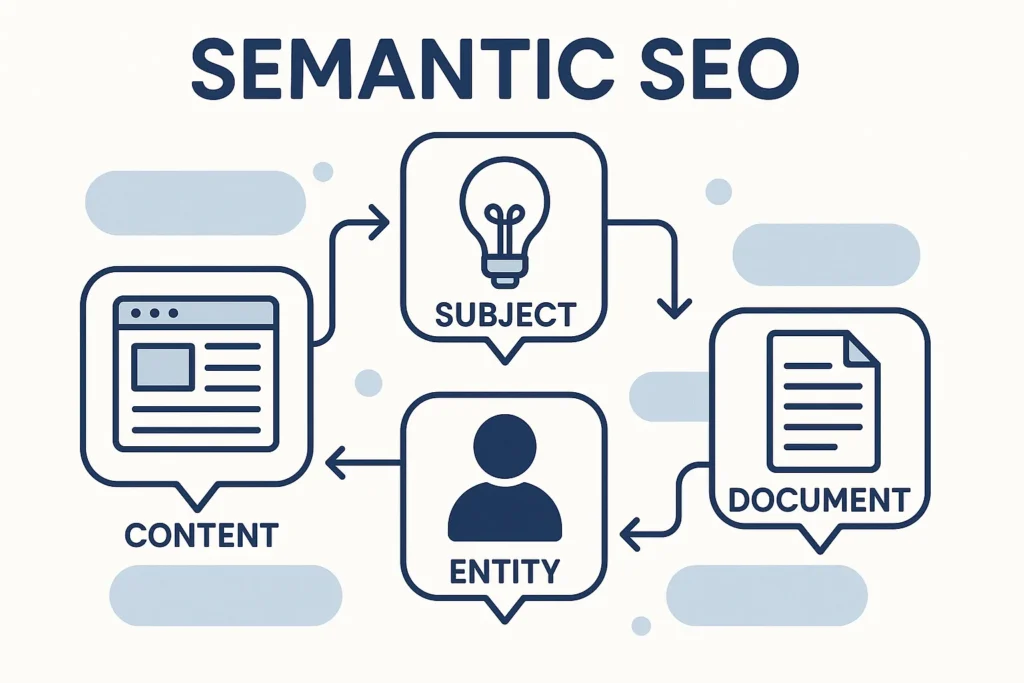
But why organize or connected content? Because a semantic search engine creates content networks, making an entity graph to organize the content of the document, so providing already organized content makes a lot of sense to reduce crawl budget and establish topical authority.
Why Semantic Seo Is Important?
Semantic seo is important because search engines are adapted to semantic search engines, but this is another thing people still use Traditional seo techniques. Semantic search engine uses artificial intelligence, entity recognition, and natural language processing (NLP) to understand content, and most of the traditional search engine specialists did not really know what NLP is. They just tell how to optimize keyword density, which is obsolete or expires on 26 September 2013, when codified semantic search with Hummingbird.
Where does semantic SEO come from?
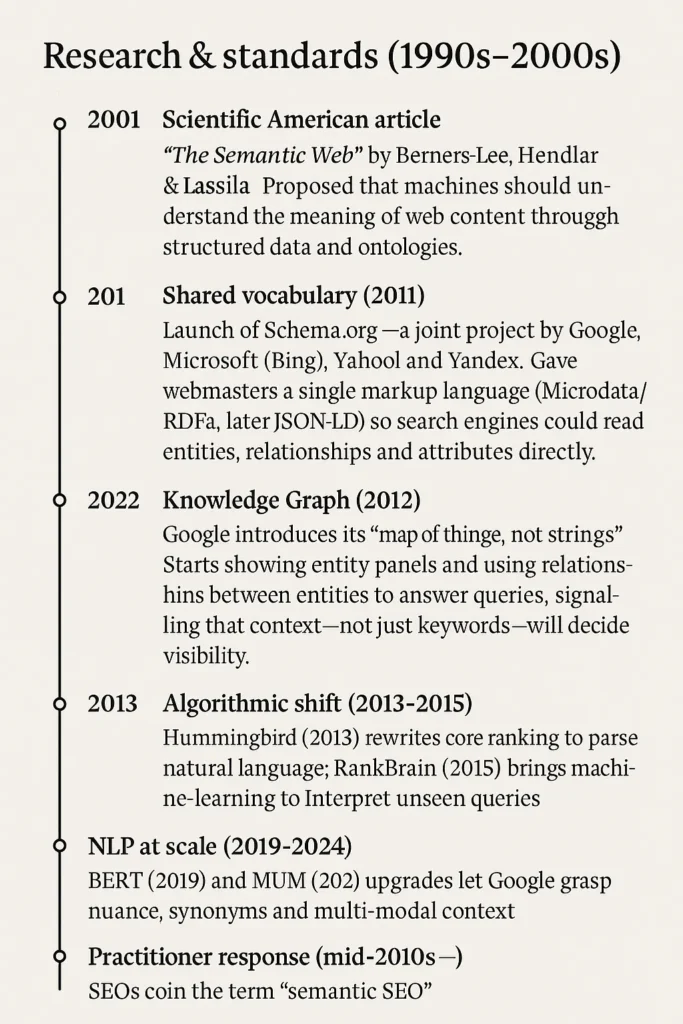
Semantic SEO grew out of the Semantic Web vision of Tim Berners-Lee (2001), was operationalised for search when Google, Microsoft, Yahoo! and later Yandex launched the Schema.org structured-data vocabulary (2011) and the Knowledge Graph (2012), and became an SEO discipline after Google’s Hummingbird core rewrite (2013) shifted ranking toward meaning, entities and intent instead of exact keywords.
| Era | Milestone | Why does it matter to SEO |
|---|---|---|
| 1. Research & standards (1990s-2000s) | 2001 Scientific American article “The Semantic Web” by Berners-Lee, Hendler & Lassila | Proposed that machines should understand the meaning of web content through structured data and ontologies. |
| 2. Shared vocabulary (2011) | Launch of Schema.org—a joint project by Google, Microsoft (Bing), Yahoo! and Yandex | Gave webmasters a single markup language (Microdata/RDFa, later JSON-LD) so search engines could read entities, relationships and attributes directly. |
| 3. Knowledge Graph (2012) | Google introduces its “map of things, not strings” | Starts showing entity panels and using relationships between entities to answer queries, signalling that context—not just keywords—will decide visibility. |
| 4. Algorithmic shift (2013-2015) | Hummingbird (2013) rewrites core ranking to parse natural language; RankBrain (2015) brings machine-learning to interpret unseen queries | Makes understanding intent and topical context essential; stuffing exact-match keywords becomes ineffective. |
| 5. NLP at scale (2019-2024) | BERT (2019) and MUM (2021) upgrades let Google grasp nuance, synonyms and multi-modal context | Reinforces that content must be semantically rich, well-structured, and connected to authoritative entities. |
| 6. Practitioner response (mid-2010s →) | SEOs coin the term “semantic SEO” | Hummingbird (2013) rewrites core ranking to parse natural language; RankBrain (2015) brings machine learning to interpret unseen queries |
What is the difference between traditional and semantic seo?
| Feature | Traditional SEO | Semantic SEO |
| Unit of Optimization | Keywords, Keyword Phrases | Topics, Entities, Concepts |
| Core Metric | Keyword Ranking Position | Topical Authority, Share of Voice |
| Key Tactic | Keyword Density, Exact Match | Entity Coverage, Structured Data, Topic Clusters |
| Goal of Content | To match a specific character string | To comprehensively answer a user’s query and satisfy their intent |
| View of Language | A collection of searchable words | A network of interconnected concepts and relationships |
| User Experience | Secondary to algorithmic signals | The primary signal for success |
How does semantic seo work?
Topical Maps & Clusters:
All relevant subtopics (entity attributes, related contexts) for a target concept. He then creates interlinked pages covering each subtopic. This obeys Google’s own model (e.g. a patent calls for clustering content semantically around a core topic, not by exact keywords). Using phrase taxonomies and hierarchical URLs (e.g. /topic/sub-topic/detail) to reflect context.
Structure (Core vs. Outer Sections): A key innovation in his topical maps is the division of content into distinct sections :
- Core Section: This contains the primary, often monetized, content of the site. It is where the majority of ranking signals should flow and where the central business objectives are met.
- Outer Section: This consists of supporting, often informational, content. Its purpose is to build historical data and trust with the search engine. By consistently providing valuable, non-commercial information over time, a site proves its expertise and gains the search engine’s confidence, which then benefits the Core Section.
Building Semantic Content Networks
The practical mechanism for building Topical Authority is the Semantic Content Network. This is a strategically created web of interconnected content pages that are linked based on their semantic and contextual relationships, not just keyword overlap.
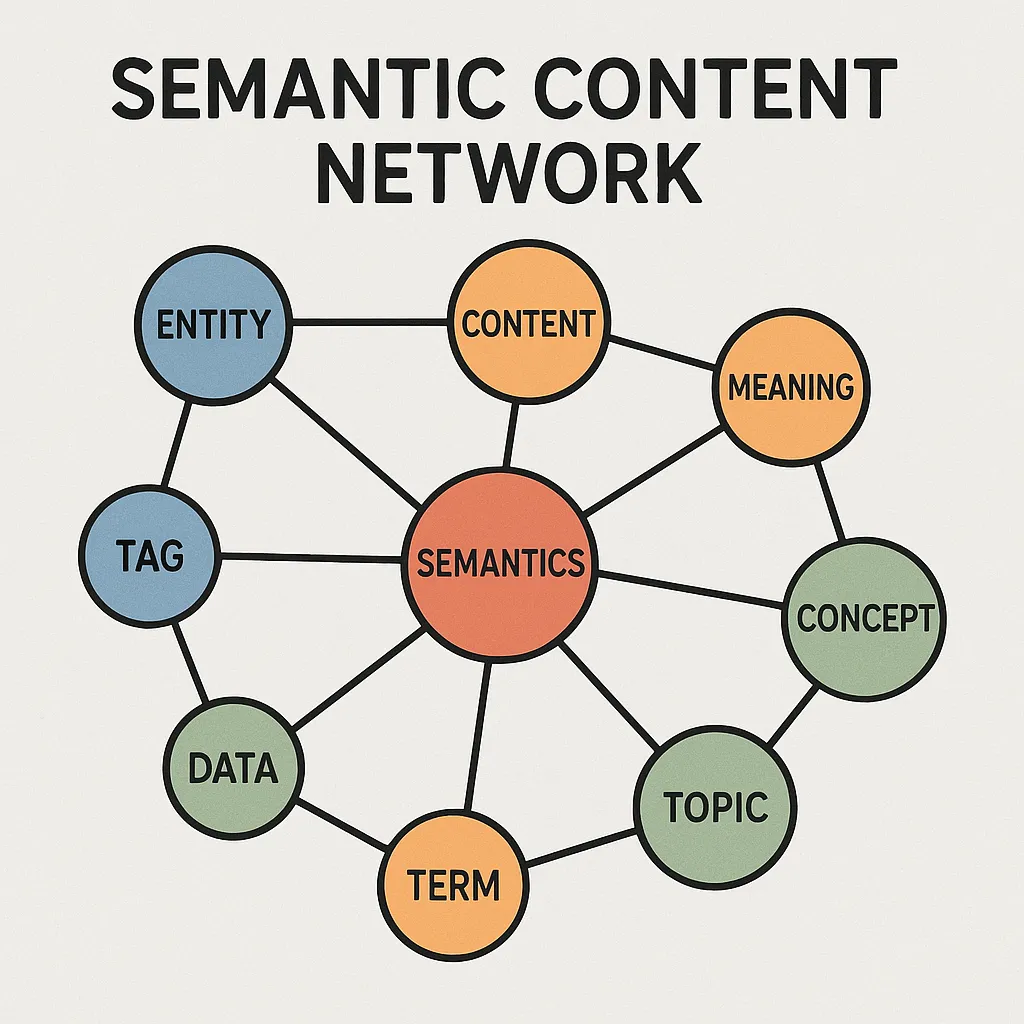
- The Role of Predicates (Verbs): A unique and foundational element focuses on predicates (verbs) as the drivers of human behavior and, therefore, search intent. He posits that queries can be clustered first by verbs (e.g., “learn,” “compare,” “buy,” “fix”) and then by nouns (the objects of those verbs).
- A robust semantic network addresses all relevant verb-noun combinations for a topic. For example, a network around “car insurance” would include content for “compare car insurance,” “buy car insurance,” “understand car insurance policies,” and “lower car insurance costs”.
- Advanced Conceptual Layers: Here are several advanced concepts to structure these networks :
- Source Context: This is the foundational “why” of a brand or website. It defines the site’s purpose, its target audience, and its unique angle on a topic. The Source Context acts as the boundary and filter for the entire content strategy.
- Contextual Bridges: These are concepts or topics that logically connect two or more distinct topical clusters. Building these bridges creates a more cohesive and integrated knowledge base, strengthening the site’s overall authority.
- Brand Identity: This refers to how the search engine perceives the brand as an entity. This identity must be consistent with the topics the site aims to achieve authority in. A site about pet food cannot suddenly become an authority on financial advice without first building a new, credible brand identity in that area.
Entity-Oriented Search in Practice
At a site-wide level, this philosophy translates into Entity-Oriented Search. This means approaching SEO from the perspective of the entity itself. The process involves identifying all the key attributes of a primary entity, ordering those attributes by importance and user interest, and then creating a comprehensive set of content that answers every conceivable question that could be generated from those attributes. This ensures complete topical coverage from an entity-centric viewpoint.

For good Semantic SEO, you must show the right “things” (entities) and how they link together. When some piece of information is missing, Google tries to guess it from the context.
Example of Contextual Information Retrieval
Original, unclear text:
“There are 2,000 zoos in Europe. I went to a few of them and took many photos.”
What Google can guess
“Photos” of what? Because we are talking about zoos, the photos are animal photos.
Google fills the gap so readers see the hidden meaning.
How Google (or another AI) might rewrite it:
“There are 2,000 zoos in Europe. I went to a few of them and took many animal photos.”
Semantic seo and entities are most relvent to each other.
Why does this matter to you
If you write “animal photos” from the start, the search engine spends less effort guessing. Clear words and clear links between ideas help your page rank better, faster, and at a lower “cost” for Google to process.
Entity-Based Content (EAV Model):
Identify key entities (persons, products, concepts) and list their attributes. Write content targeting those entity attributes, ensuring coverage.

For example, he may write pages on a movie’s director, cast, awards, etc., each internally linked. This reflects Google’s entity-centric patents: Google scores entities by occurrence and connectedness and prefers content that ties entities together in coherent narratives. NLP tools (like his BERT summarizer and custom GPT agents) to extract and test entity coverage.

Here, the Entity is “California,” the attribute is “Population,” and the value is 39.43 million (2024).
Using synonyms and related terms naturally, which matches Google’s use of transformer NLP models (like BERT) to understand query intent. In short, Koray fills semantic gaps by writing about entities in a rich context.
Attribute Prioritization:
Select prominent, popular, and relevant attributes for entities to enhance contextual relevance. For instance, when optimizing for a query about “diet planning,” using “dietician” as an entity rather than “doctor” improves precision.
Algorithmic Authorship Templates:
Use structured content formats with clear sentences, tables, lists, and headings to ensure content is easily parsed by search engines. This approach establishes authenticity and expertise, crucial for E-A-T (Expertise, Authoritativeness, Trustworthiness) signals.
Technical Implementation of Semantic SEO
Schema markup a “Semantic SEO method”. By marking up pages (e.g. Article, Person, Product schemas), he provides explicit entity data. Crucially, “Structured data has to be aligned with what you said on the web page.
Your visual semantics have to be aligned with textual semantics.”. In practice, this means using JSON-LD to define the same facts and relationships the text presents (e.g., tagging a CEO’s name as Person with author role). Google’s structured-data guide also emphasizes this alignment. Proper markup helps Google’s Knowledge Graph and rich results, supporting the same entities and topics that it writes about.
NLP, NLU, AI, ML & Semantic seo: How near they are?
Semantic SEO is closely tied to NLP, NLU, AI, and ML because it uses these technologies to understand the meaning behind search queries and web content. Applying AI and machine learning, search engines can better interpret what users are really looking for and provide more relevant results.
Semantic SEO focuses on how content is structured, ensuring that it aligns with user intent, and relies on machine learning to help search engines make these connections more effectively.
- AI and ML are the Foundation: All these technologies (NLP, NLU, and Semantic SEO) depend heavily on AI and ML. AI provides the general framework, and ML provides the methods and algorithms for machines to “learn” language and meaning.
- NLP and NLU are intertwined: NLU is a more focused branch of NLP. Essentially, NLP provides the tools to process text, and NLU helps the machine understand it.
- Semantic SEO Leverages NLP, NLU, and AI: Semantic SEO incorporates NLP and NLU to interpret the meaning and context of content and queries. It is the practical application of AI to improve search engine rankings based on content understanding, not just keyword matching.
On-page & Semantic SEO:
How do we do content writing with semantic seo?
To optimize content in semantic seo, you need to remember a lot of things. The rules that use in semantic seo are fully algorithmic and user-oriented, both!
- Define with Precision: Do not assume the reader or Google understands the entity. Provide a concise, one-sentence definition that includes its category, purpose, and primary use case.
- Main Content and Supplementary Content Properly defined
- Use Proper Word Sequence & Avoid Fluff: Structure sentences to present the most important information first. Ruthlessly edit out “context-less” filler words that do not add value, as this improves clarity for both users and machine parsers.
- Use Factual, Quantifiable Language: Replace opinion-based or modal verbs (e.g., “should,” “will,” “need to”) with factual statements. Instead of “many benefits,” state “seven benefits.” This signals objectivity and credibility.
- Qualify Instances: Be descriptive. Do not just mention “symptoms”; specify “severe, recurring symptoms.” Adding qualifiers, adjectives, and specific details provides a much clearer and more precise picture for the search engine.
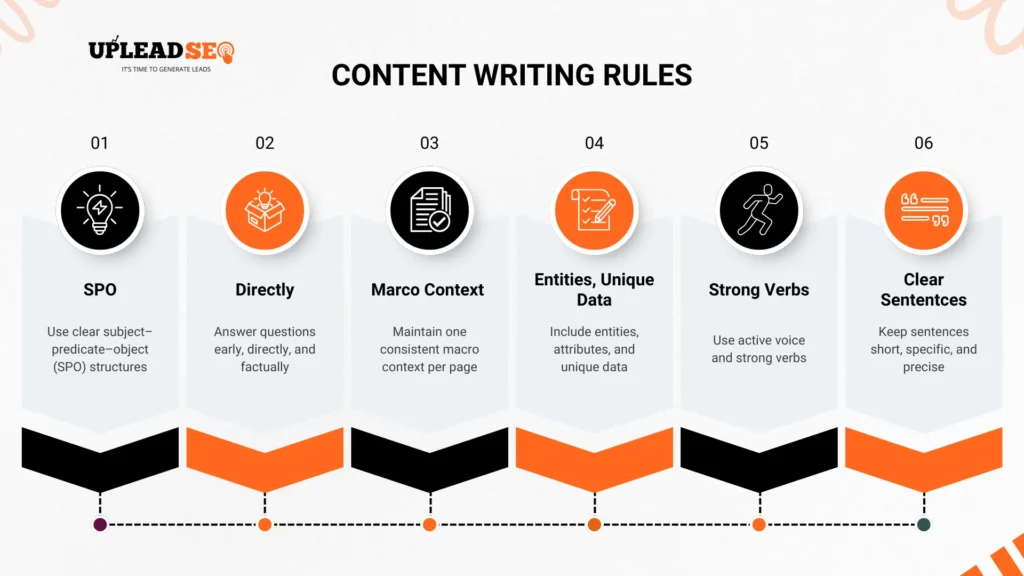
Does Keyword Research Doesn’t Exist In Semantic Seo?
Yes, Keyword research doesn’t exist in semantic seo, but topic or query research exists. Before creating a topical map, you need to do topic or query research, SERP scanning, then proceed with it and create a semantic content network according to your “source context” = your business goal.
- Take all queries that are performed by the user, you take this from different resources, aherf keyword explorer, SEMrush keyword explorer, SERP scanning like Google auto suggest, YouTube auto suggest, etc.
- Resources such as Wikipedia, Wikidata, and Wikihow can be used for Semantic SEO Keyword research.
- Google Images and Query Refinement Bubbels also help with Semantic SEO Query Research since they are connected to each other with a contextual hierarchy.
- The tabs on the SERP play a very important role.
- Related Searches, SERP product filters, third-party tools etc.
Semantic HTML5 Tags
Semantic HTML5 tags give more understanding to the search engine how the structure of the page is. Semantic tags like <header>, <footer>, <nav>, <section>, <article>, <aside>, and <main>.
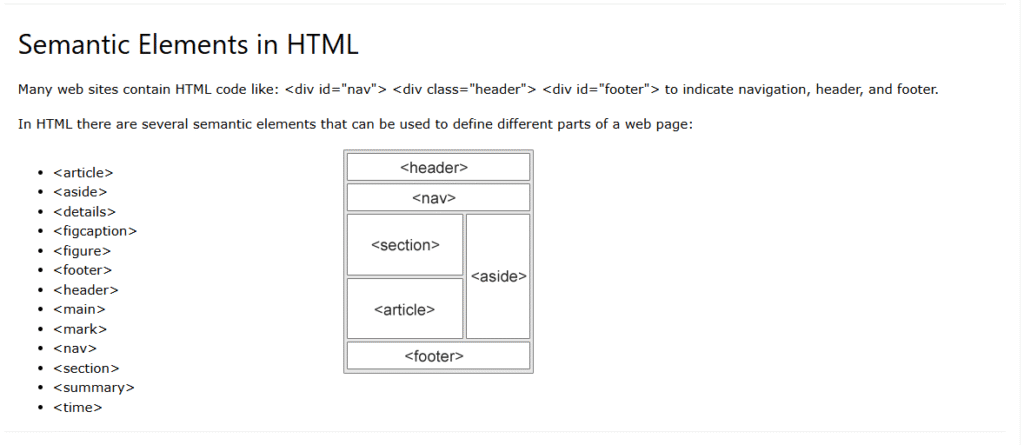
Site-tree, Semantic URL Organizing, and Semantic SEO
A semantic site-tree means a semantic content network that is knowledge-based on a specific topic. Semantic URL categorizing or organizing categorizes all your topics to create a structured semantic site-tree and knowledge base.
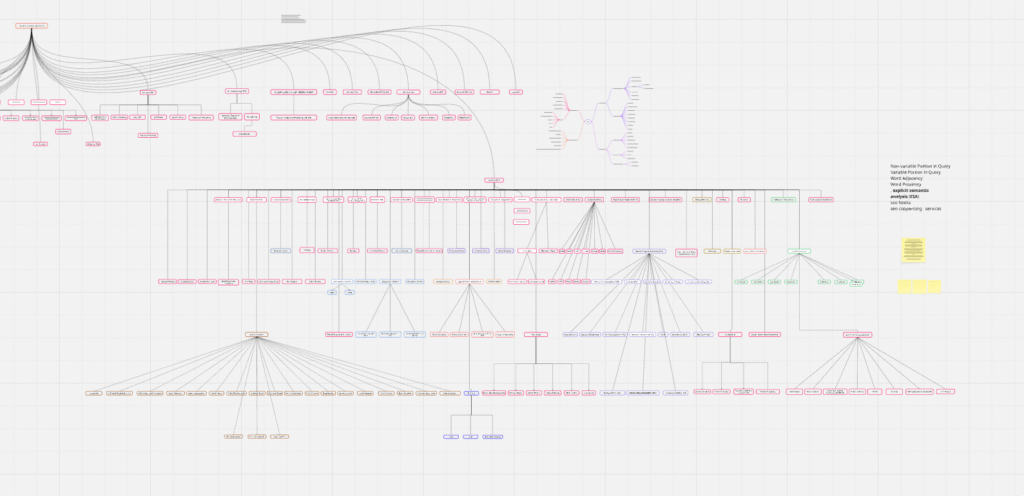
Additional practices of semantic SEO for patents
Patent US20160147878A1 outlines a system for a “Semantic search engine” that uses principles from “Meaning-Text Theory” and “Lexical Functions” to transform both queries and content into formal semantic representations. Instead of matching keywords, this system calculates a “Scored Coincidence algorithm” based on the degree of overlap between the meanings of the query and the content, taking into account statistical and semantic factors.
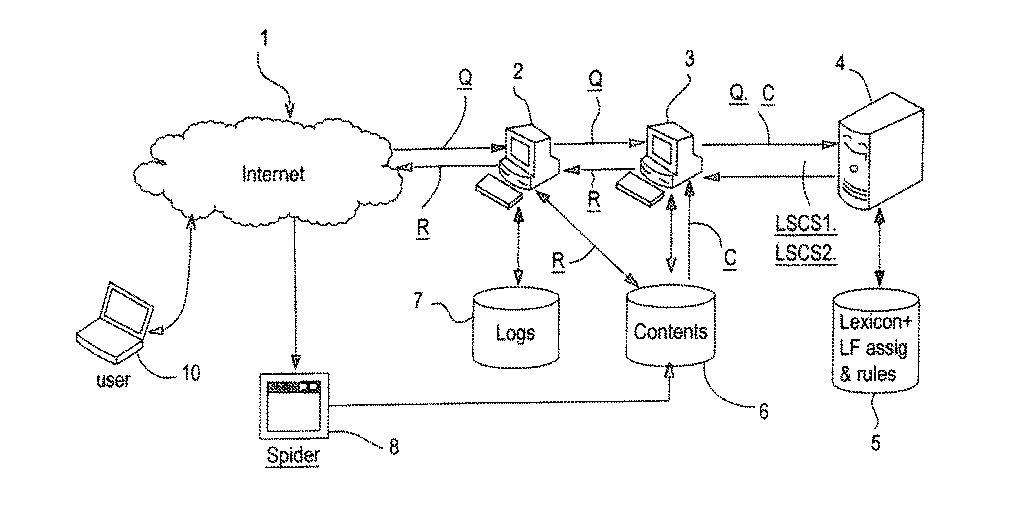
Patent WO2008027503A3 describes a method for populating a database by first parsing an ontology (a formal representation of knowledge) to identify concepts, using those concepts to search for documents, and then establishing a formal relationship between the retrieved document and the ontology. This illustrates an early blueprint for a concept-based search system.
A more recent patent filing demonstrates the system’s evolution, describing how an AI assistant can use real-world contextual signals—such as time, location, user data, and prior interactions—to personalize and modify its responses. This goes far beyond the semantics of the query itself, pointing toward a future of hyper-personalized, contextually-aware search.
Neural Matching: This is Google’s internal term for using neural networks to connect words to concepts, enabling the understanding of “super synonyms”.
It functions as a re-ranking system. First, traditional signals are used to gather a set of potentially relevant documents. Then, the neural matching algorithm re-ranks this set based on a deeper conceptual match between the query and the content of the pages, independent of links or exact keyword matches.
Passage Ranking: Officially called the “passage ranking system,” this technology allows Google to identify and rank individual passages from a webpage, even if the rest of the page covers a broader topic.

This is a ranking change, not an indexing one; Google still indexes the entire page but has the capability to surface the single most relevant passage—the “needle-in-a-haystack”—in response to a very specific query.
Dark Truth About LSI Keywords
In semantic seo, LSI keyword concepts are very common. In reality, this concept doesn’t exist; it’s some people famous this term that leads to taking part in semantic seo, according to Brian. Official sources did not describe anything about it! Latent Semantic Indexing (LSI) is a 1988-era academic technique that never scaled to the modern web.
“LSI keywords” is an SEO marketing buzzword—Google engineers have repeated since 2019 that Google doesn’t use them. Google abandoned classic LSI in the late 1990s and moved to link analysis (PageRank), statistical language models (2000s), and deep-learning semantic systems (RankBrain 2015, BERT 2019, MUM 2021, Gemini 2024). No Google patent after 2003 mentions SVD-style LSI for ranking. Machine-learning pipelines rely on word-piece embeddings, entity graphs, and transformers, not SVD matrices.
Semantic SEO guide/platform
Upleadseo is specifically a knowledge base of seo, I more a deeper dive into the semantic seo and share practice tips and real information theoretically and practically, which works. So this is the best platform for you to read and update your knowledge. Here is the Semantic SEO Wikipedia.

